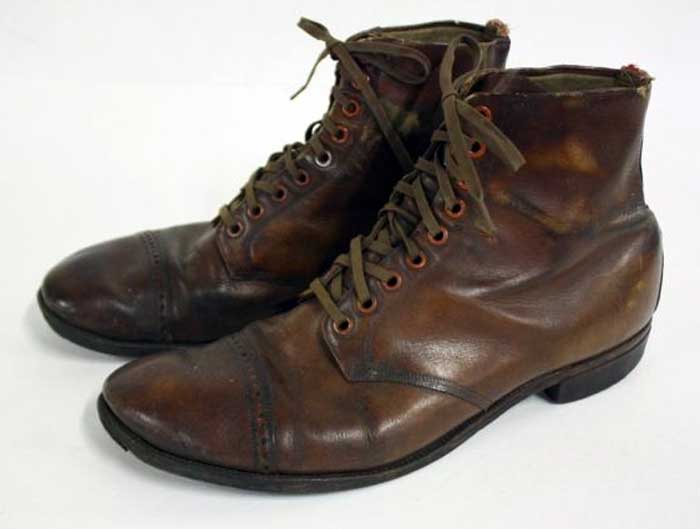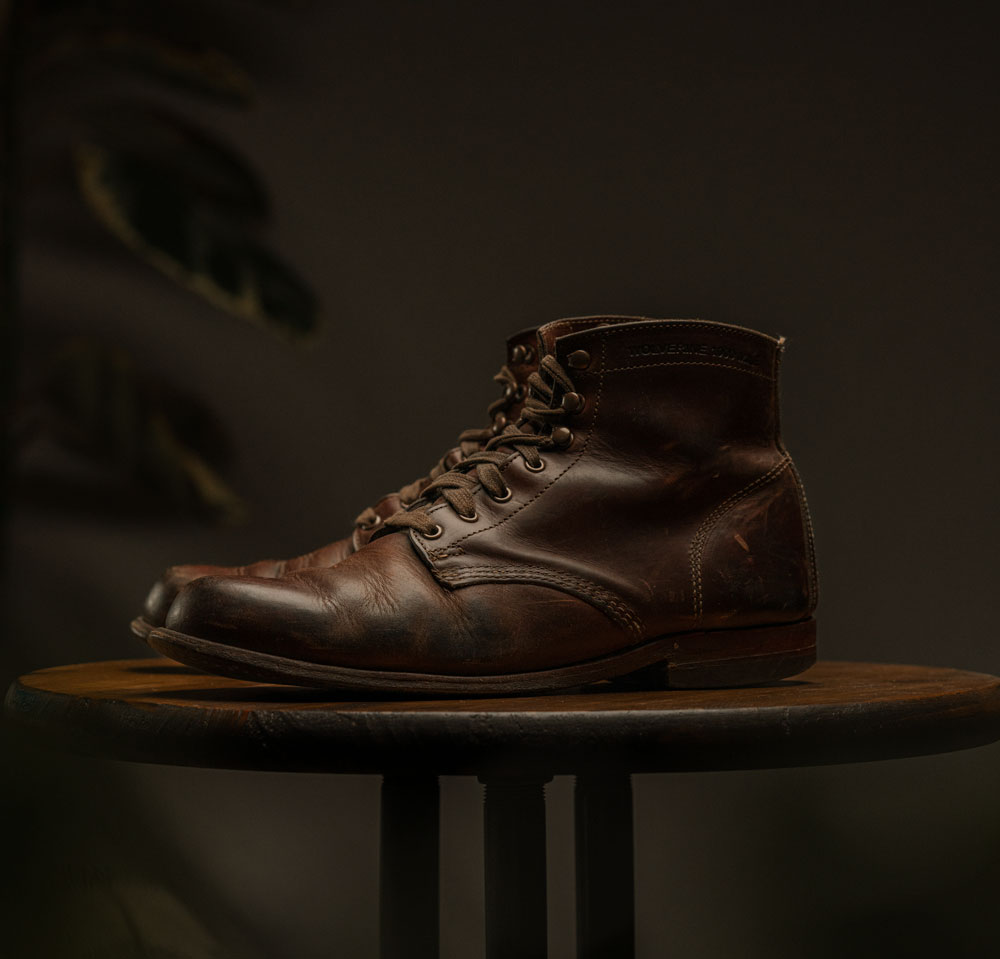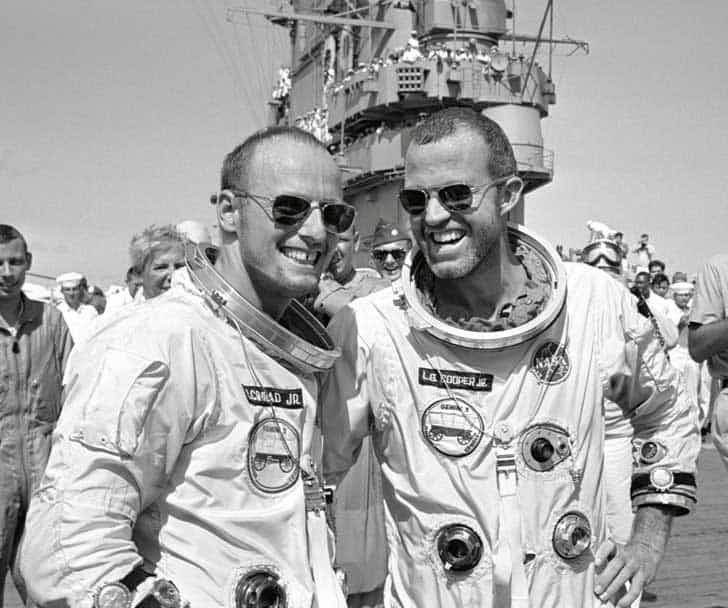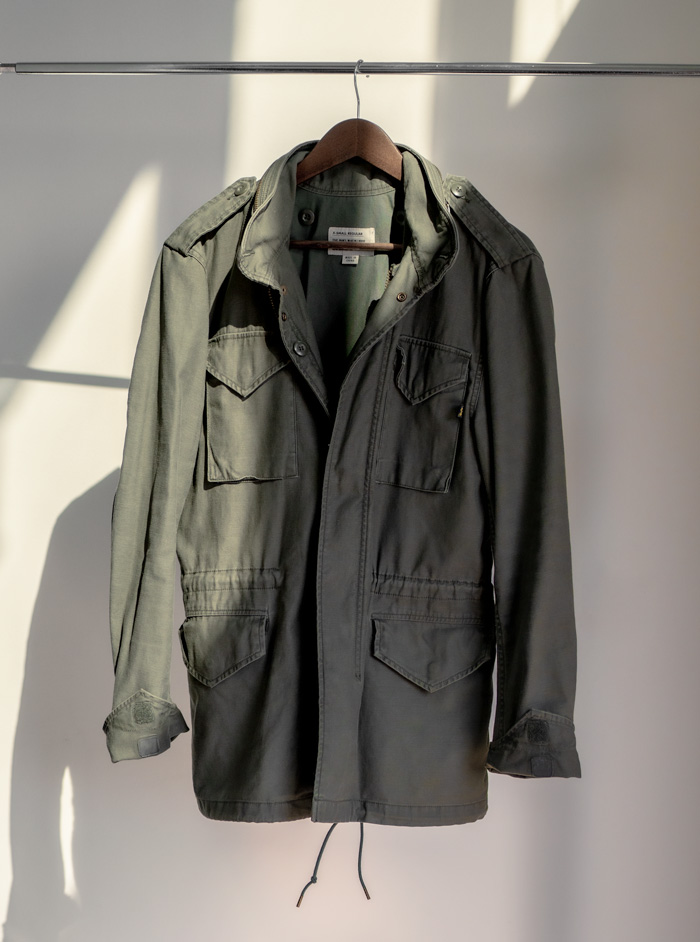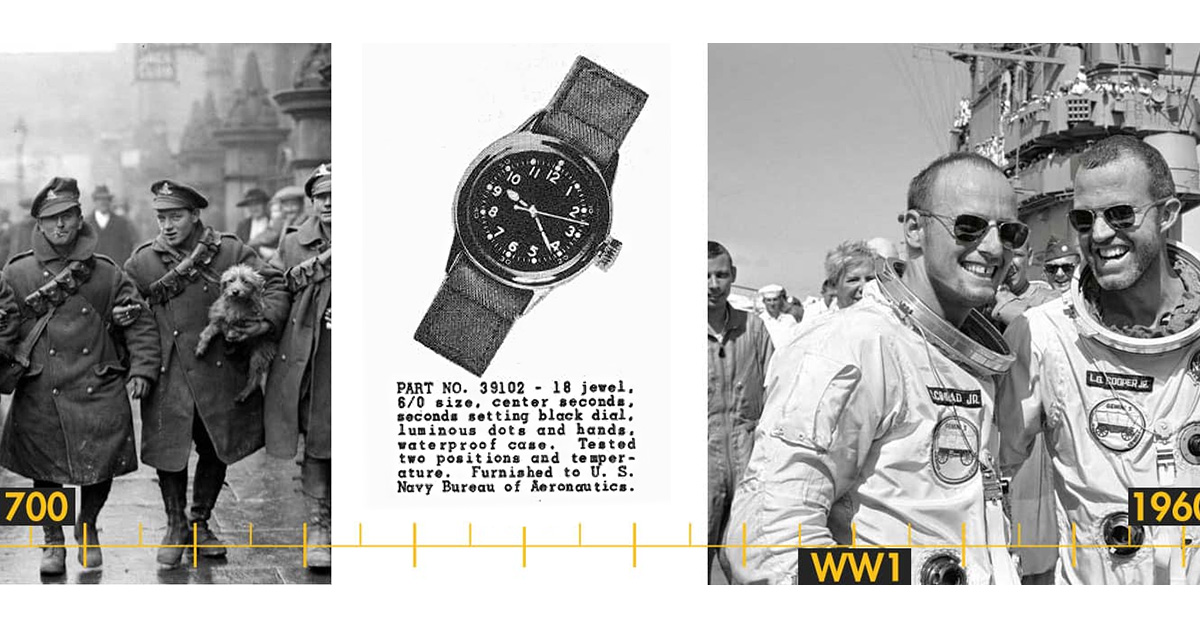
The deep history behind the styles you wear every day.
From chinos to cardigans, many of the clothes in your closet can track their origins to development for the military.
Some may come as no surprise – field jackets and combat boots, anyone? – but you may be surprised to learn that the origins of these fourteen of your favorite everyday garments can be traced back to land, sea, and air forces from around the world.
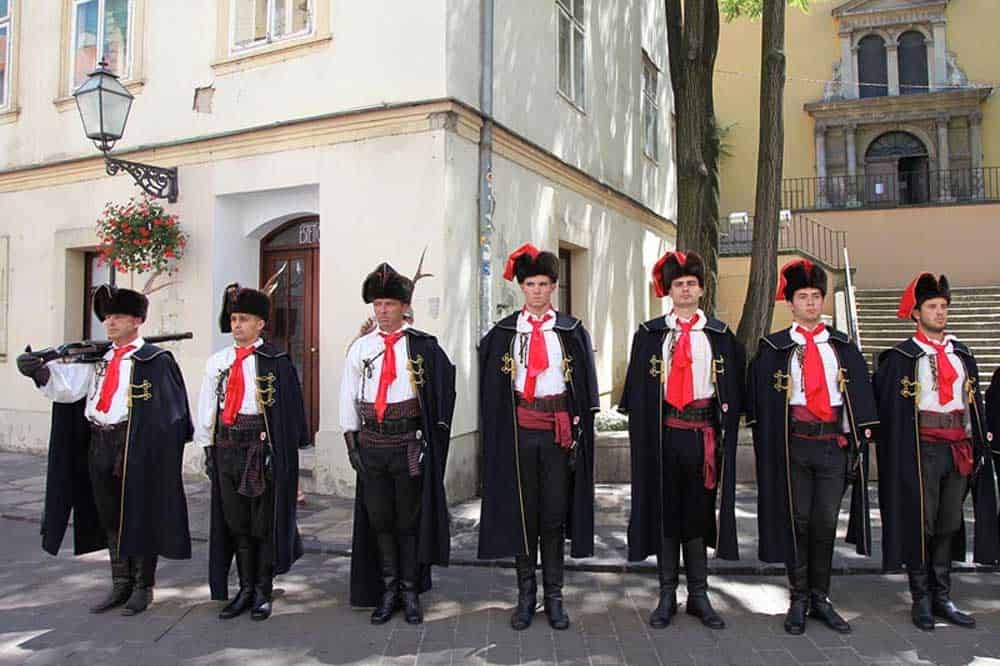
1630s
Necktie
Croatian Mercenaries
Even the ancient Romans donned some sort of neckwear for their military uniforms, but the modern necktie traces its origins to the small knotted neckerchiefs sported by Croatians during the Thirty Years’ War. Named the “cravat” by the French, the tie would evolve over the next three centuries before Jesse Langsdorf of New York City modernized the tie as we know it in 1926.
In honor of their sartorial contribution, Croatia continues to celebrate International Necktie Day every October 18.

1720s
Pea Coat
British Royal Navy
Variations of the traditional double-breasted heavy wool pea coat had likely existed for decades before the first reference to the “pea jacket” appeared in American newspapers around 1723. The U.S. Navy suggests that the term originated as an abbreviation of the “pilot cloth” material used to make the coat, while others look back to the Dutch word “pijjekker” as its genesis.
For more check out The 20 Best Men's Pea Coats, Car Coats, Walker Coats, and Overcoats
1850s


Cardigan
British Army
That’s right, the favored knitwear of Mr. Rogers, Perry Como, and The Dude was originally brought to us by the military. Lord Cardigan lent his name to the knitted wool waistcoats worn by his cavalry officers for their charge against the Russians during the Crimean War. The name – and the style – stuck among patriotic Brits wishing to honor their victorious hero.
Read more: Primer's Complete Guide To Sweater Types: Fabric, Fit, and Care

19th Century

Chinos
European militaries
The Spanish introduced “pantalones chinos” to European military forces throughout the 1800s, the latter word referring to the Chinese origins of the cotton twill cloth used to make them. The Americans imported the same material for their khaki uniform trousers during the Spanish-American War in 1898, shortening the term to “chinos” and establishing what would become inextricably linked with Ivy League style through the following century.
And that khaki color? In the late 1840s, British Army Lieutenant Harry Lumsden was serving in India and seeking a way to camouflage his bright white cotton uniform with the help of some river mud (or tea, depending on your source.)
1900s
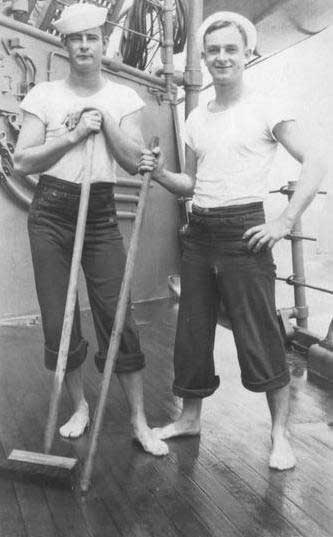
T-shirt
US Navy
The closest approximation to the modern T-shirt was first issued by the U.S. Navy as undershirts in the years following the Spanish-American War, and soon caught on as their own style when sailors in warm climates were spotted wearing only undershirts sans uniform jackets. Prior undergarments were typically full union suits or at least henley-style shirts with buttons.
Read more: The 11 Best Pocket T-shirts

1900s

Service Boots
US Army
Boots have long been the footwear of choice for soldiers around the world, but one of the earliest deployments of the ankle-high service boot we know today appeared when the U.S. Army issued the “russet marching shoe” in 1904. As their name implies, these cap-toe boots were made for marching with nine eyelets derby-laced up the front after it was discovered that the earlier designs with upper lacing hooks were prone to wearing out.
Under the auspices of the legendary General John J. Pershing, these boots were perfected for the rigors of World War I trench warfare with the waterproof leather and thick soles we currently associate with comfortable civilian work boots like the Wolverine 1000 Mile.

Service-style boots being worn in a modern smart casual outfit

1910s
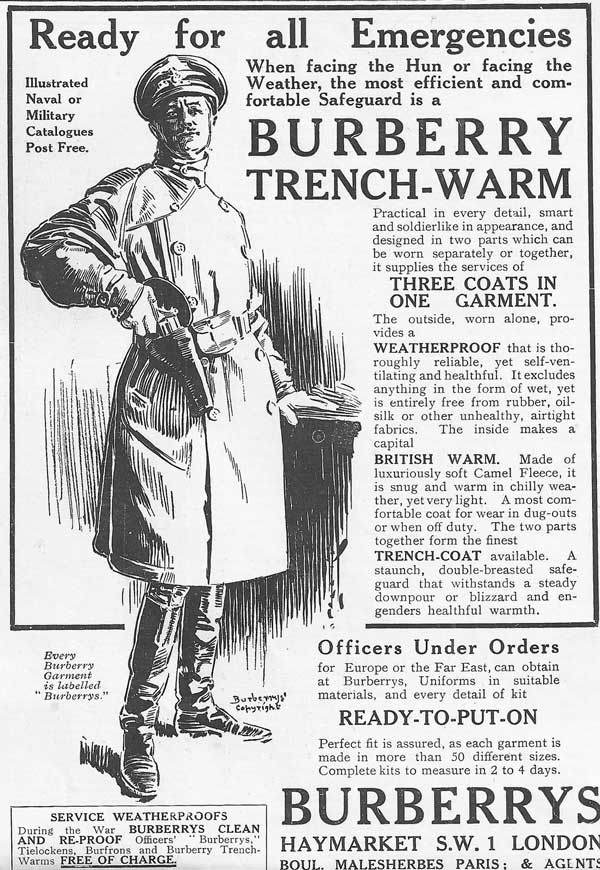
Trench Coat
British Army
Although the design dates back to a War Office submission in 1901, the classic British trench coat was standardized during World War I to provide officers with a water-resistant, lightweight equivalent to their heavy greatcoats. Burberry led the way, tapping into service the tough gabardine fabric that Thomas Burberry had invented in 1879. (Burberry rival Aquascutum claims to have been producing trench coat-like garments since the Crimean War a half-century earlier.) → What's the difference between a trench coat and a pea coat?
How to Wear a Trench Coat Without Looking Like a 1930s Detective
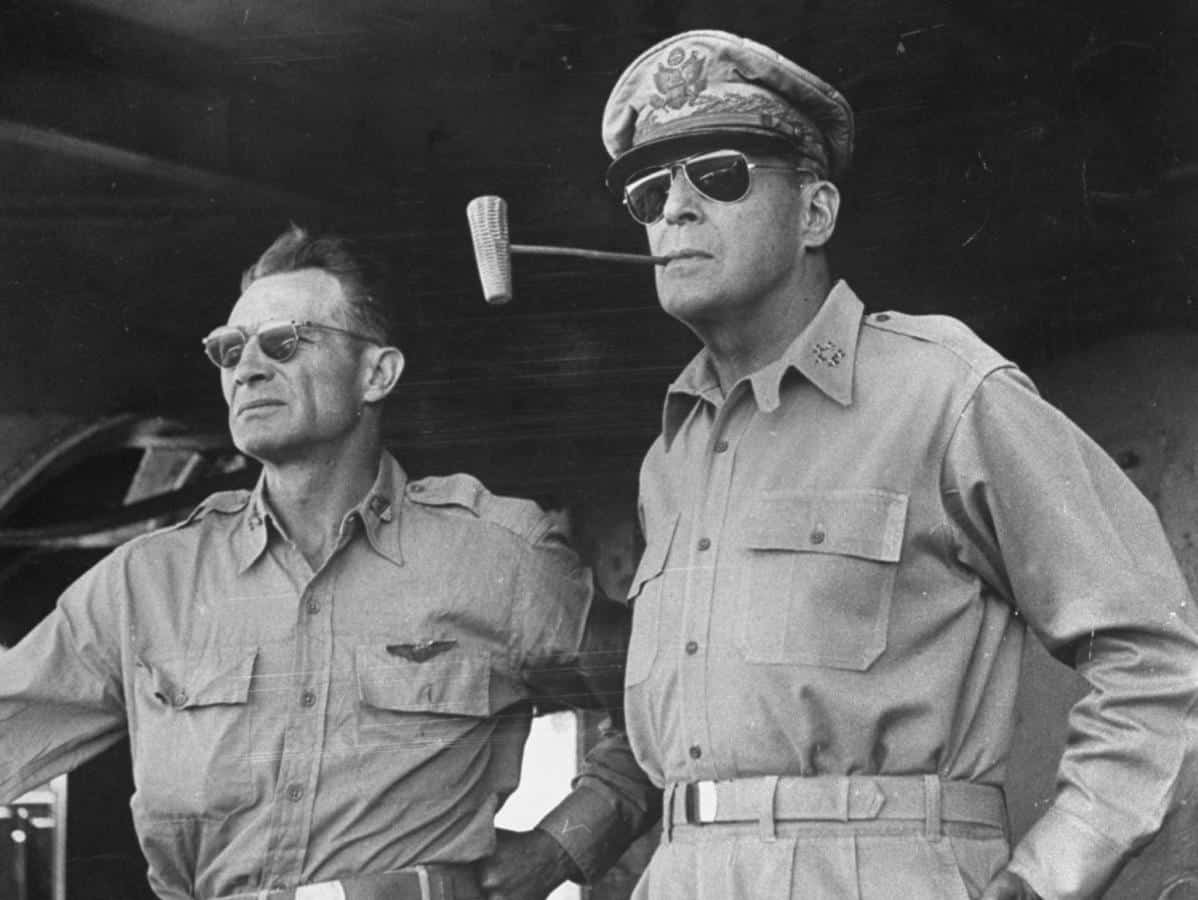
1930s
Aviator Sunglasses
US Army Air Force
As aviation technology advanced between the wars, so did conveniences for pilots. In 1936, Bausch & Lomb responded to pilots seeking a functional alternative to the clunky goggles worn at the time.
A square-framed variant emerged around 1958, introduced by American Optical (AO Eyewear) as the “Navigator” model, and it rapidly grew its popularity among military pilots, eventually standardized by the U.S. military as MIL-S-25948. While AO had pioneered the style, Randolph Engineering has been the Department of Defense’s exclusive eyewear provider since 1982.

1930s
Cargo Pants
British Army
When the Brits rolled out their earliest version of battle dress in the years leading up to World War II, all the king’s men were issued a pair of wool serge trousers with two extra pockets: a field dressing pocket on the upper right hip and a map pocket over the left knee.
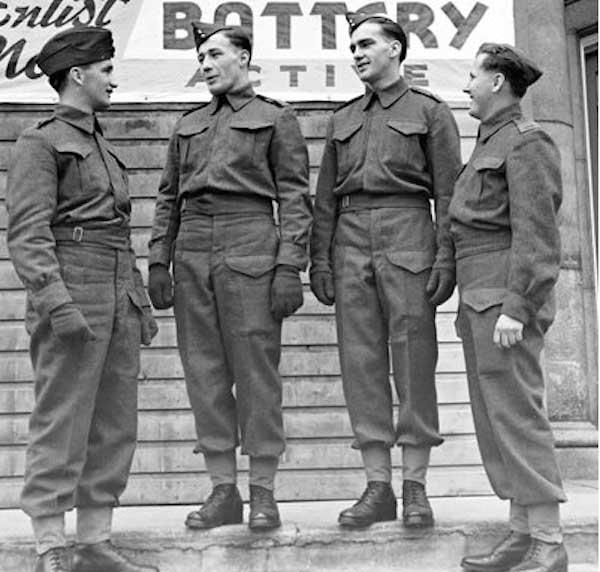
1940s
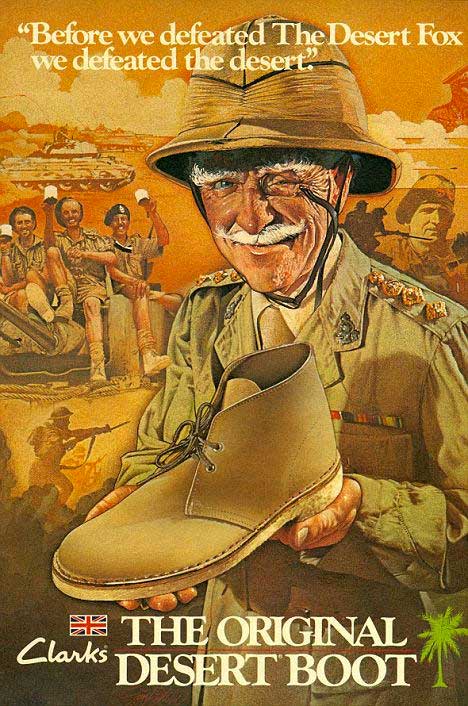
Desert Boots
British Military Stationed in Burma
Clark’s standardized the desert boot during WWII after Nathan Clark observed off-duty officers in unique crepe-soled boots with suede uppers attempting to stay comfortable in the heat. Clark learns the boots originated in a bazaar in Cairo and begins prototyping after returning to England. Read more about styling men's desert boots:

General Dwight D. Eisenhower gives the order of the Day. “Full victory-nothing else” to paratroopers in England, just before they board their airplanes to participate in the first assault in the invasion of the continent of Europe. National Archives
1940s
The Field Jacket
US Military
The field jacket's journey into menswear began during World War II, the first version, the M-41, debuted in 1941 to replace the wool service coats used in World War I. Despite its practical intent, the M-41 had shortcomings. Its insulation was minimal, its protection against rain and wind was poor, and its olive drab color faded quickly, reducing its effectiveness as camouflage. Soldiers often regarded it as inadequate for combat, but its widespread use was driven more by necessity than its actual performance.

Marines in the Peleliu islands in 1944 National Archives
By 1943, the M-41 was replaced by the M-43, a significant improvement designed for the harsh European winters. It featured a longer, hip-length cut, added pockets, a detachable hood, and a waist drawstring, providing more versatility in cold weather. The M-43 set a new standard, but its successor, the M-50, compromised some of the practical features, making it less effective as a combat garment.
The turning point for the field jacket came with the introduction of the M-65 in 1965. Designed by Alpha Industries, the M-65 was crafted from a blend of nylon and cotton sateen (“NYCO”), providing superior weather resistance. This version retained the classic hip-length cut, olive green color (OG-107), and the utility-driven design that made the M-43 popular. However, the M-65 introduced some key innovations that set it apart. Most notably, it featured a built-in hood that could be stowed inside the collar with a zip closure, replacing the earlier detachable hood system. The jacket’s front zipper was covered by a snap-button storm flap, and Velcro replaced the traditional button cuffs for easier adjustment. These updates made the M-65 highly versatile, adapting to unpredictable weather and offering better protection in the varied climates of the Vietnam War.
The M-65 quickly became a staple in the U.S. military, serving through the Vietnam War and permeating civilian culture.
@primermagazine Fall jacket guide: the m65 field jacket
Over the decades, the M-65 has appeared in numerous colors and camouflage patterns, while its influence on outerwear remains evident in the design of modern field jackets.

From the War Department publication AN 05-35A-8, April 1945, a joint publication of the USAAF, USN, and RAF.
1940s

From the 1943 military specification 94-27834-B
The Field Watch
American Military
Wristwatches have a rich history tied to the military, with their evolution gaining momentum long before the A-11's introduction in World War II. While there are anecdotal reports of 19th-century soldiers strapping pocket watches to their wrists for convenience, the true shift toward wristworn timepieces came with the advent of the “trench watch” during World War I. These early wristwatches were modified pocket watches, featuring lugs for straps and luminous hands for visibility in low light—essential for coordinating operations in the trenches. These adaptations marked a turning point in military timekeeping, as soldiers required precise and durable tools on the battlefield.
Around the same time, civilian aviators also began commissioning wristwatches to meet the demands of flight. Alberto Santos-Dumont, a pioneering aviator, is famously associated with this early trend, needing a timepiece that could be easily read during flight. These watches emphasized functionality and legibility, laying the groundwork for wristwatches to become essential tools in both military and civilian life.
Developed during World War II, the A-11 marked a major milestone in the evolution of military watches because, unlike previous adaptations of pocket watches, it was specifically designed to meet military specifications aimed at improving performance in the field. One of its most significant features was its hacking function, allowing soldiers and pilots to synchronize their watches down to the second—a crucial ability for coordinating attacks, troop movements, and aerial missions. This feature helped make the A-11 indispensable during the war, earning it the nickname “the watch that won the war.”

A modern watch with clear design cues from vintage field watches
The A-11’s straightforward design—featuring a simple, highly legible dial, hacking function, and robust construction—set a benchmark for future military timepieces. While it didn’t introduce cutting-edge technology, its reliability and practicality established a blueprint for field watches, influencing both military contracts and civilian models for decades to come. Arguably, many modern watches trace their lineage back to the A-11.

1950s
Bomber Jacket
US Air Force

Read more about our favorite jacket types and styles.
Alpha Industries developed the nylon MA-1 bomber jacket as a lightweight, waterproof, and warm update to the leather flight jackets worn previously by American military aviators.

Bomber jackets now come in all kinds of materials like this suede jacket
Read more: The Bomber Jacket: How to Wear It
1960s
Combat Boot
American Military

Left to right: M-56, M-63, and M-67, the numbers referencing their year of inception / source: https://armyshade.exblog.jp/22877036/
The tall, shiny black leather boots that come to mind when people think of combat boots became widespread in the 1960s. Initially introduced as standard-issue footwear for the US military, they became synonymous with the formal, polished look associated with service uniforms. While these boots continued to be used broadly for decades, more specialized designs emerged for different combat environments, for example the leather and canvas “jungle boots” issued later on in the Vietnam War.

Members of the US Army 82nd Airborne Division at Andrews Air Force Base in the 1980s
This pattern continued into the Gulf War of the 1990s, when a newly designed tan desert boot became standard in hot climates, but the polished black boots remained a fixture in non-combat zones, particularly for those stationed in the US, Europe, or peacekeeping zones.
By the early 2000s, the military began phasing out the black leather boots, with the Marines, Army, and Air Force transitioning to tan and “coyote brown” boots designed for modern combat needs.









